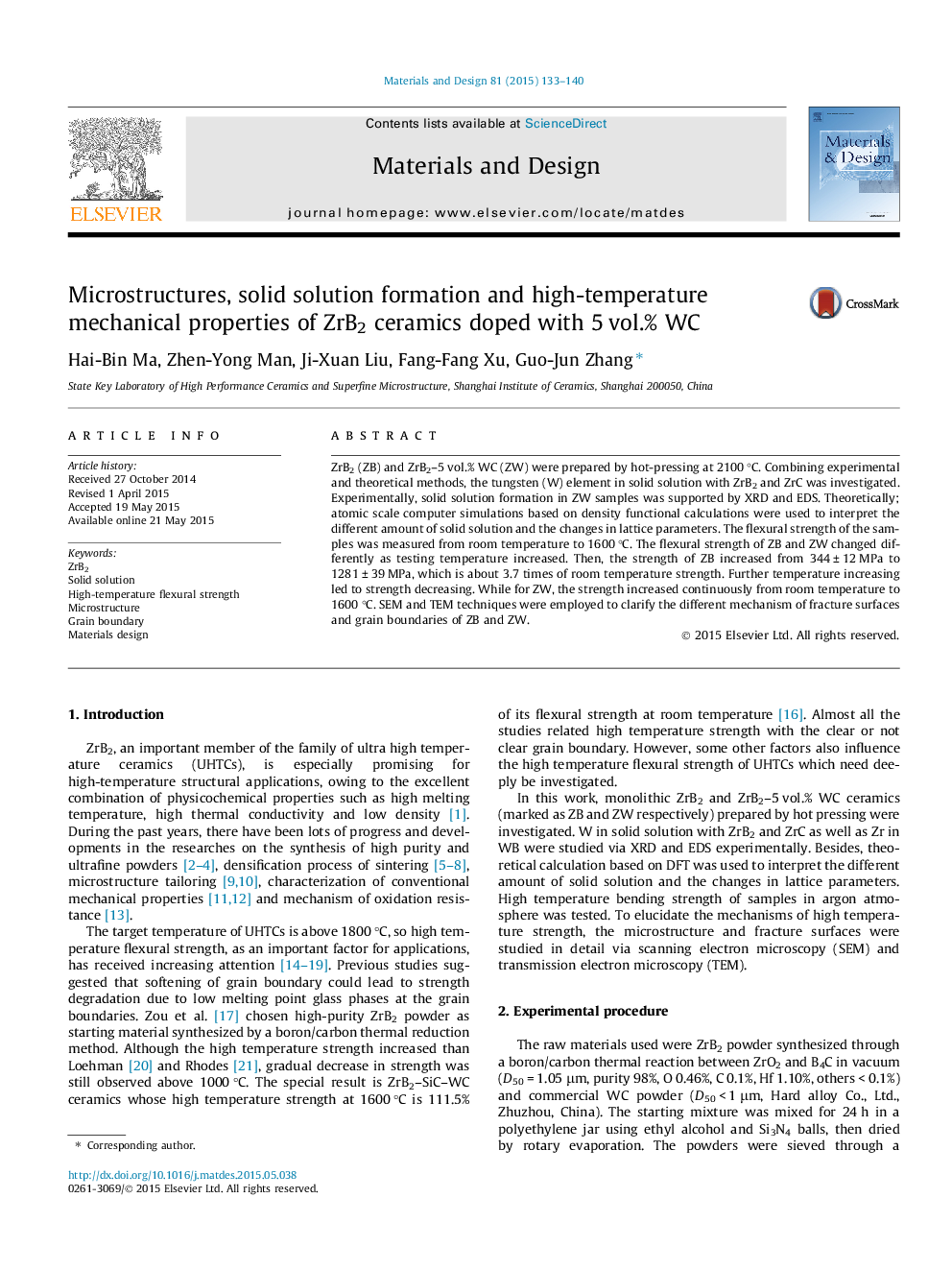| Article ID | Journal | Published Year | Pages | File Type |
|---|---|---|---|---|
| 828520 | Materials & Design (1980-2015) | 2015 | 8 Pages |
•Relationship of solid solution structure and properties of ZrB2–5WC was clarified.•The effect of crack deflection led to the increasing resistance of fracture.•The flexural strength of ZrB2–5WC increased from room temperature to 1600 °C.•The flexural strength of ZrB2 possessed the highest flexural strength at 1000 °C.
ZrB2 (ZB) and ZrB2–5 vol.% WC (ZW) were prepared by hot-pressing at 2100 °C. Combining experimental and theoretical methods, the tungsten (W) element in solid solution with ZrB2 and ZrC was investigated. Experimentally, solid solution formation in ZW samples was supported by XRD and EDS. Theoretically; atomic scale computer simulations based on density functional calculations were used to interpret the different amount of solid solution and the changes in lattice parameters. The flexural strength of the samples was measured from room temperature to 1600 °C. The flexural strength of ZB and ZW changed differently as testing temperature increased. Then, the strength of ZB increased from 344 ± 12 MPa to 1281 ± 39 MPa, which is about 3.7 times of room temperature strength. Further temperature increasing led to strength decreasing. While for ZW, the strength increased continuously from room temperature to 1600 °C. SEM and TEM techniques were employed to clarify the different mechanism of fracture surfaces and grain boundaries of ZB and ZW.
Graphical abstractFigure optionsDownload full-size imageDownload as PowerPoint slide
